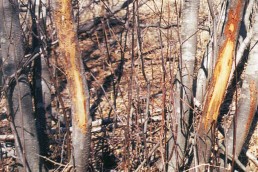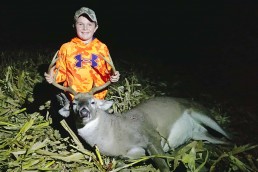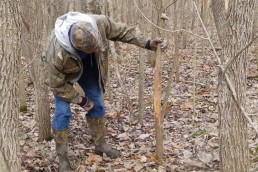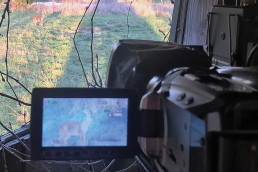Whitetail Season is over, so Now What?
SHARE THIS POST
As you read this, many will be starting to wind down the hunting season or are done and now are turning more attentions to spending time with family for the holidays. I hope that you were able to put some venison in the freezer for yourself and family and perhaps were able to donate a deer or two to friends or one of the many organizations that pays the processing fees with the meat going to local charitable food pantries, like Farmers and Hunters Feeding the Hungry (FHFH.org on Facebook).
The season is coming to an end, so now what are you going to do until then?
If you are like me, you enjoy it out in the woods, breathing in that fresh, crisp air and just hanging in a tree, watching nature. Last season in a subdivision on the outskirts of the town I live by, a coyote galloped by with a deer head in its mouth. I was so shocked—that’s not something you see every day. I think I was envisioning how the mount would look in my living room, and I then lost focus, missing him. I was bummed. He actually looked more like a wolf than a coyote, but it was an amazing sight and one I’ll never forget. Or, there was the time when I was in Kansas and saw two 180-inch bucks square off 60 yards away.
So, now what do we hunters do?
This month and beyond can be the most opportune times to start planning for next season. I’ll devise my plan now and then divide my year into four segments: February to March with post-season scouting, reviewing and planning for next year; April to June, planting food plots and placing trail cams; July to September, managing food plots, doing deer population surveys; and September/October (depending when your whitetail season starts) to January, hunting season.
Are you enjoying this post?
You can be among the first to get the latest info on where to go, what to use and how to use it!
I like to start around late January spending time walking around the woods. I’m looking for signs I might have missed. Moving around now is not going to affect next season, so I don’t have to be as careful and can cover a lot more ground. I am trying to find trails, scraps, scrap lines and rubs I wasn’t aware of earlier in the fall. I mark them on a map and try to figure out the patterns and make sure there are no new ones emerging I might’ve missed at the beginning of the season. If I see any new patterns, I need to consider new trees to prepare or to plant for next year. Deer certainly follow patterns, but the forest changes and that can sometimes alter deer movement.
Now is also a good time to talk to land owners you think might allow you to hunt their property in the future. Finding ideal land to hunt on is getting more and more difficult, and wearing out a little shoe leather is imperative to finding the next plot that might hold a trophy buck. How often have you heard about a piece of property that had a monster buck hiding out on a seemingly obscure plot of land? They are out there. It just takes some time and dedication to find those parcels. Also, allow planning time now to decide where to put in food plots and with what, if the owner will allow it. Place your seed and supply orders this month.
As spring rolls around, it will be time to start on the planting. Try to get your food plots planted before the rains start. You will need to monitor the changing weather. Plan on getting this done on the weekends, weather permitting. This is also when I will set up any trail cameras.
At this point, you’ll have some downtime. I like to check my cameras about once a month. Of course, they have new ones that can send you pictures via a wireless connection, but that only works if you have cell service at your properties. Know that before you invest in these cameras or ask for them for Christmas. By the end of next summer, you should then have a pretty good picture of the shooters on the property and you can set your sites on a trophy and some does to balance the herd. By planning now on an approach to herd management, you can make steady progress annually and eventually have a balanced herd on the properties you wish to hunt in the seasons later next year.
MWO
SHARE THIS POST
Did you enjoy this post?
You can be among the first to get the latest info on where to go, what to use and how to use it!
Ian Munnoch
If you have any questions regarding the concept of tree saddle hunting, please contact Ian Munnoch at ianm@nuhunt.com or 812-322-5080.



